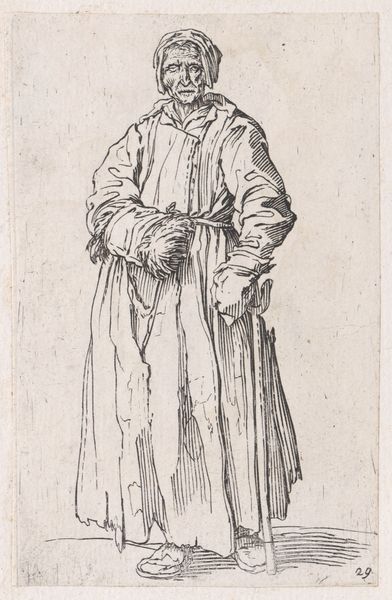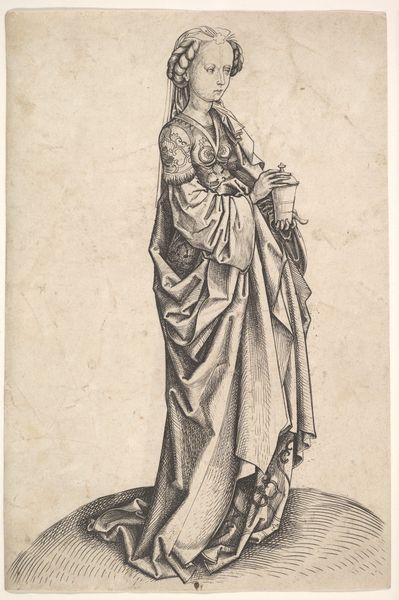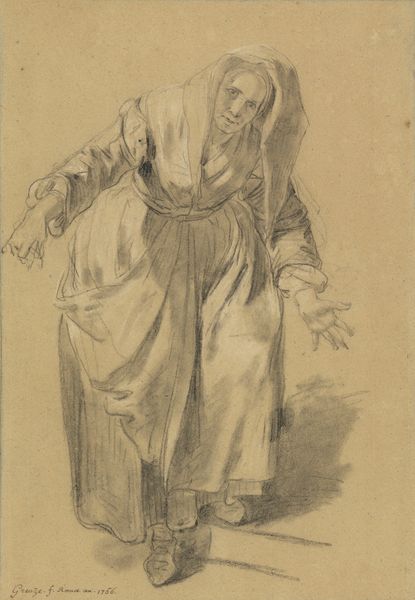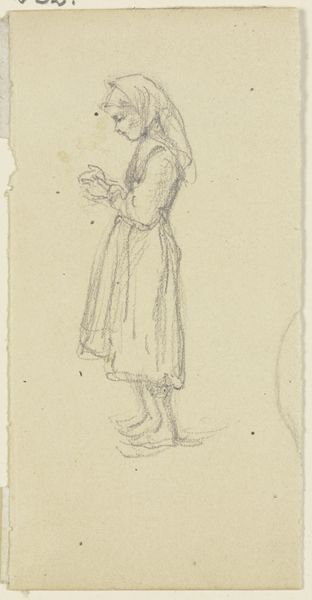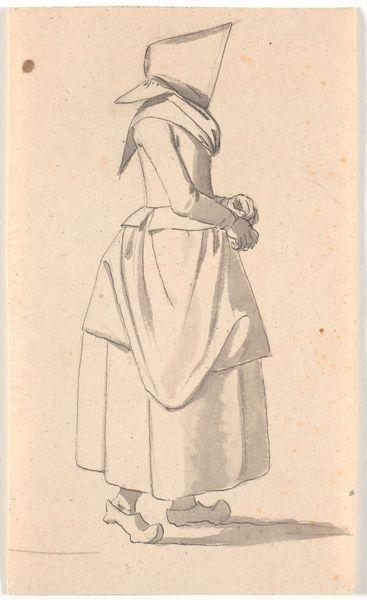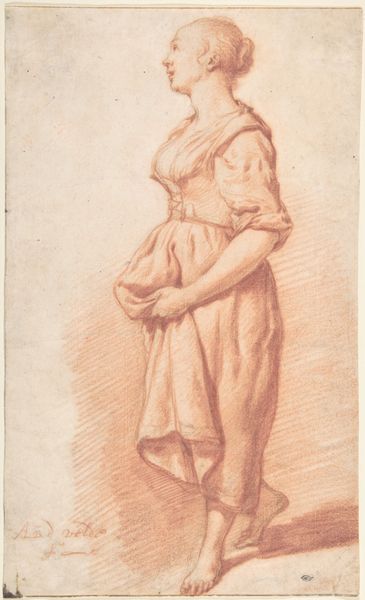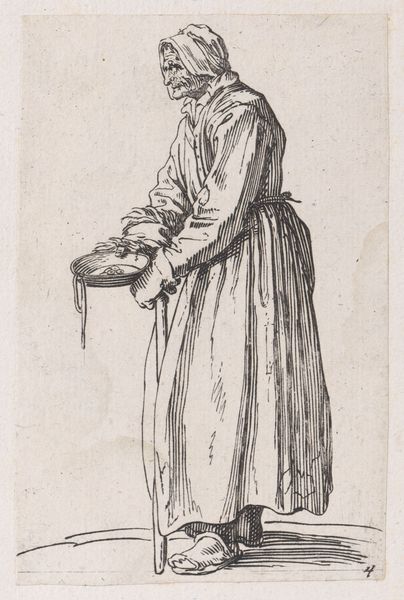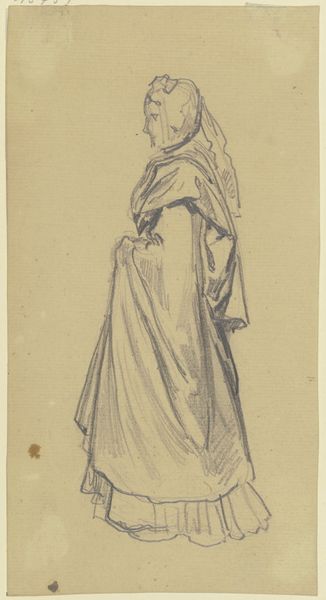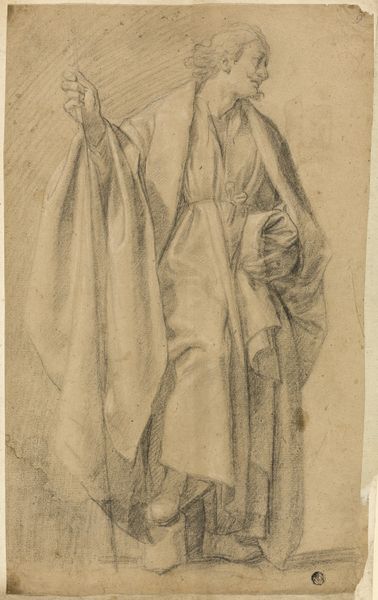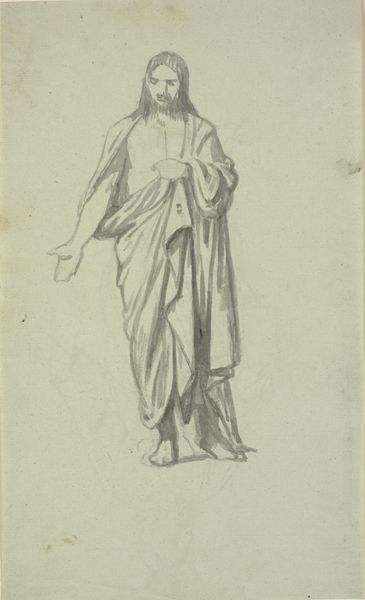
drawing, pencil
#
portrait
#
drawing
#
figuration
#
romanticism
#
pencil
Dimensions: 213 mm (height) x 124 mm (width) (bladmaal)
Curator: This delicate pencil drawing is "Gående ung pige", or "Walking Young Girl", created between 1828 and 1830 by Martinus Rørbye. It's currently part of the collection here at the SMK. Editor: She has this fragile look, almost as if she's sketched from a dream. And those gestures – her hand slightly outstretched, the drape of the fabric… it feels caught between worlds, you know? Romantic, but in a haunting, whisper-y way. Curator: Rørbye, though considered a part of the Danish Golden Age of painting, also dabbled in romanticism, with an emphasis on intimate, everyday scenes and character studies like this. Look at the detailing in her dress – the artist used very economical lines. Editor: That gesture, the outstretched hand… is that a typical pose from that period? Is she beckoning, perhaps? I immediately start wondering about the stories we might tell around her… Curator: The extended hand doesn't necessarily convey such narratives; I tend to think of her more as self-contained, her hand is like a fleeting thought made tangible. You find this figuration, this pensive interiority, reflected throughout romantic-era artwork. Think of how casually we read images now, due to mass media: that hadn't yet occurred here. Editor: And, visually, the almost severe verticality in the garment gives a sense of uprightedness and nobility to the person, but if we study the way she's casting down her gaze, and where her gestures seem slightly incomplete, a symbolic language comes forth where it feels less noble. Curator: I find her to be both contained and expressive; it’s about feeling more than pure symbolic reference. What's potent is how Rørbye renders not just appearance, but presence. She's just stepped into the picture from elsewhere... perhaps into this gallery and towards the eye of the viewer, like you and me. Editor: And her clothes – so much modesty, but it hints, ever so faintly, at rebellion too, that something bubbles under. This dialogue with clothes is there but in that era, wasn’t being clearly stated! Rørbye creates an opening where those undertones arise. She represents how we think about representation, and in that way she continues to "walk."
Comments
No comments
Be the first to comment and join the conversation on the ultimate creative platform.
